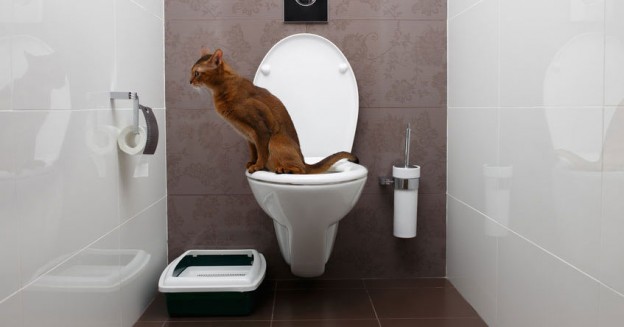Prevent Clogs and Damage: Never Flush Cat Poop Down Your Toilet - Expert Recommendations
Information HereThey are making several good points on How to Dispose of Cat Poop and Litter Without Plastic Bags overall in this article directly below.

Intro
As cat owners, it's necessary to bear in mind how we take care of our feline buddies' waste. While it might appear convenient to flush feline poop down the bathroom, this practice can have damaging effects for both the environment and human health and wellness.
Alternatives to Flushing
The good news is, there are more secure and more responsible methods to take care of feline poop. Take into consideration the following alternatives:
1. Scoop and Dispose in Trash
The most common method of taking care of feline poop is to scoop it into an eco-friendly bag and toss it in the trash. Be sure to utilize a devoted trash scoop and get rid of the waste quickly.
2. Usage Biodegradable Litter
Select naturally degradable cat clutter made from materials such as corn or wheat. These clutters are eco-friendly and can be securely disposed of in the trash.
3. Bury in the Yard
If you have a lawn, consider hiding feline waste in a designated location away from vegetable gardens and water resources. Make sure to dig deep adequate to avoid contamination of groundwater.
4. Install a Pet Waste Disposal System
Buy an animal waste disposal system specifically created for feline waste. These systems use enzymes to break down the waste, decreasing smell and environmental impact.
Health and wellness Risks
Along with environmental concerns, purging cat waste can additionally position health and wellness risks to human beings. Pet cat feces may include Toxoplasma gondii, a parasite that can trigger toxoplasmosis-- a possibly serious disease, particularly for pregnant females and individuals with weakened immune systems.
Ecological Impact
Purging cat poop presents dangerous microorganisms and bloodsuckers right into the water supply, positioning a substantial risk to aquatic ecological communities. These pollutants can negatively affect marine life and concession water top quality.
Conclusion
Liable animal ownership extends beyond providing food and sanctuary-- it likewise involves appropriate waste administration. By avoiding purging pet cat poop down the commode and choosing alternative disposal approaches, we can minimize our environmental impact and shield human health.
Why Can’t I Flush Cat Poop?
It Spreads a Parasite
Cats are frequently infected with a parasite called toxoplasma gondii. The parasite causes an infection called toxoplasmosis. It is usually harmless to cats. The parasite only uses cat poop as a host for its eggs. Otherwise, the cat’s immune system usually keeps the infection at low enough levels to maintain its own health. But it does not stop the develop of eggs. These eggs are tiny and surprisingly tough. They may survive for a year before they begin to grow. But that’s the problem.
Our wastewater system is not designed to deal with toxoplasmosis eggs. Instead, most eggs will flush from your toilet into sewers and wastewater management plants. After the sewage is treated for many other harmful things in it, it is typically released into local rivers, lakes, or oceans. Here, the toxoplasmosis eggs can find new hosts, including starfish, crabs, otters, and many other wildlife. For many, this is a significant risk to their health. Toxoplasmosis can also end up infecting water sources that are important for agriculture, which means our deer, pigs, and sheep can get infected too.
Is There Risk to Humans?
There can be a risk to human life from flushing cat poop down the toilet. If you do so, the parasites from your cat’s poop can end up in shellfish, game animals, or livestock. If this meat is then served raw or undercooked, the people who eat it can get sick.
In fact, according to the CDC, 40 million people in the United States are infected with toxoplasma gondii. They get it from exposure to infected seafood, or from some kind of cat poop contamination, like drinking from a stream that is contaminated or touching anything that has come into contact with cat poop. That includes just cleaning a cat litter box.
Most people who get infected with these parasites will not develop any symptoms. However, for pregnant women or for those with compromised immune systems, the parasite can cause severe health problems.
How to Handle Cat Poop
The best way to handle cat poop is actually to clean the box more often. The eggs that the parasite sheds will not become active until one to five days after the cat poops. That means that if you clean daily, you’re much less likely to come into direct contact with infectious eggs.
That said, always dispose of cat poop in the garbage and not down the toilet. Wash your hands before and after you clean the litter box, and bring the bag of poop right outside to your garbage bins.
https://trenchlesssolutionsusa.com/why-cant-i-flush-cat-poop/

We hope you enjoyed our article on Can You Flush Cat Poo or Litter Down the Toilet?. Many thanks for taking the time to read our post. Don't hesitate to take the opportunity to distribute this blog if you enjoyed it. Thank you so much for your time invested reading it.
Schedule A Service Call